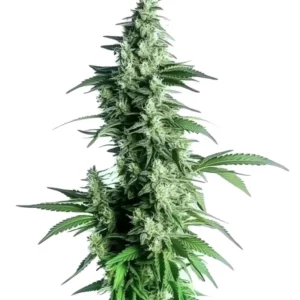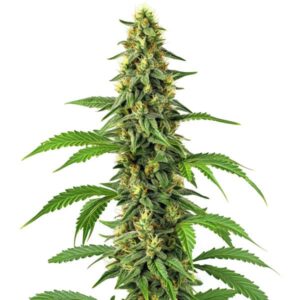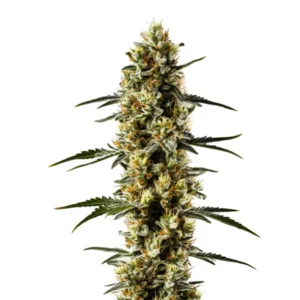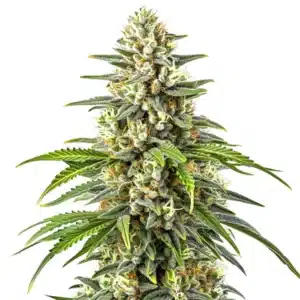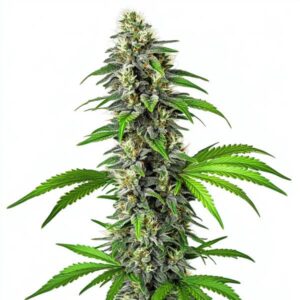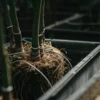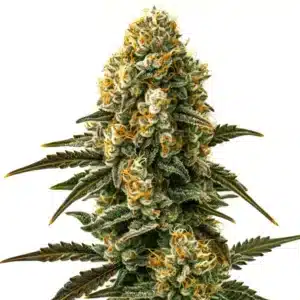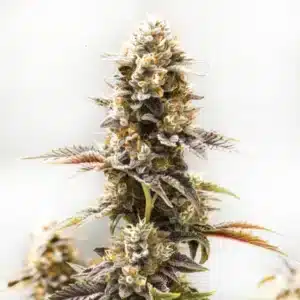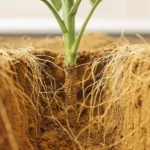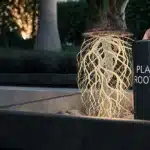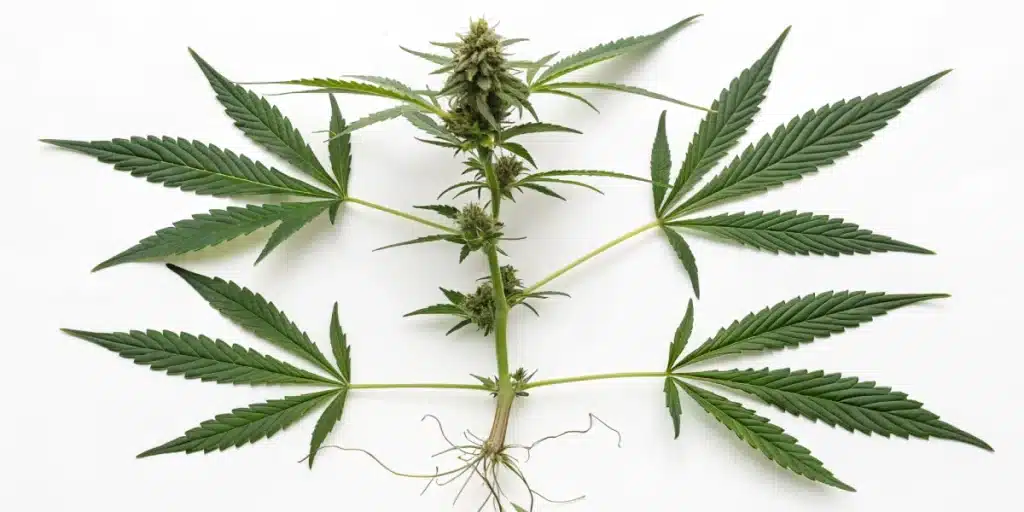
Cannabis Plant Anatomy Diagram: A Detailed Visual Guide
Synopsis of Cannabis Plant Structures
Key Parts of the Plant
When you look at a cannabis plant, its main elements stand out clearly. Roots anchor the plant in soil and absorb water plus essential minerals, while also supplying a base for symbiotic fungi that enhance nutrient uptake. From there, stems rise, carrying nutrients upward and defining the plant’s shape. Branches extend outward, creating a scaffold that holds leaves and buds in positions optimal for light capture, which boosts growth efficiency.
Leaves spread like solar panels, capturing sunlight for energy production and housing stomata that regulate gas exchange. Flowers, or buds, develop sticky trichomes packed with cannabinoids and terpenes that determine scent, flavor and potency. Meanwhile, the vascular network, made of xylem and phloem vessels, links roots to leaves, ensuring a constant flow of life‑sustaining fluids and sugars to every growing tip.
Recommended Strains
Significance of Each Component
Every element contributes to growth, resilience and final yield. Roots provide stability and secure vital resources; without them, the plant risks drought stress or tipping over in heavy winds. A well‑developed root mass also supports beneficial bacteria that fend off pathogens and stimulate root hair growth, boosting absorption rates.
Stems and branches shape the plant’s form and carry the weight of maturing buds. A sturdy framework prevents collapse under flower clusters, while flexible branch angles help distribute light evenly. Leaves convert light into sugars via photosynthesis, driving all metabolic processes including bud formation. Flowers produce resin that shields against pests and attracts pollinators outdoors, and trichomes pack extra defense chemicals to protect delicate tissues.
Diagram and Labels
A clear Cannabis Plant Anatomy Diagram helps growers identify each part at a glance. In such a visual, color‑coded labels mark roots, stems, branches, leaves, flowers and trichomes, while numbered callouts guide learners through each component’s function without confusion. This instant recognition accelerates learning and guides pruning or nutrient adjustments.
Interactive versions let you zoom into trichomes, branch nodes or even microscopic leaf surfaces, while static charts include legends explaining every label. By consulting these tools regularly, cultivators improve airflow management, detect nutrient issues before they stunt growth and optimize photoperiods, boosting overall plant health and consistency across harvests.
Promos & Deals
In‑Depth Insight into Leaves and Branches
Leaf Structure and Function
Cannabis leaves feature serrated edges with a central vein that branches into a network of smaller veins, each channeling water and minerals from roots to every cell. Inside, chloroplasts capture photons and synthesize sugars necessary for cell division, root growth and bud development. Leaf surface area directly influences how much light the plant converts into energy.
Tiny stomata dot the leaf surface, acting like adjustable valves that admit carbon dioxide and release oxygen. When humidity drops, stomata close to conserve water, preventing wilting during heat spikes. This balance between gas exchange and water retention keeps the plant thriving under varied environmental conditions and supports vigorous flowering.
Branching Patterns and Growth
Branches form at nodes along the main stem, emerging in opposite pairs or spirals depending on the genetic lineage. This growth pattern creates multiple bud sites and gives the plant a bushier appearance, translating to increased harvest potential. The angle and thickness of each branch determine how much weight it can support during peak bloom.
Growers use topping or low‑stress training to influence branching direction and density. By removing the stem tip early, lateral shoots gain dominance, creating an even canopy. This structure enhances light penetration to lower bud sites, promotes uniform bud size and reduces areas of stagnant air, cutting mold risk and improving resin development.
Contribution to Photosynthesis
Chlorophyll in cannabis leaves selectively absorbs blue and red light wavelengths, converting them into chemical energy stored as glucose. These sugars travel through phloem vessels to fuel growth in buds, roots and stem thickening. During this process, excess oxygen exits through stomata, supporting surrounding microfauna and balancing greenhouse conditions.
Optimal leaf orientation maximizes light capture. Cultivators may rotate plants or prune overlapping foliage to ensure each leaf receives full exposure. By maintaining healthy, horizontal leaves, growers can increase daily photosynthetic efficiency, speeding up flowering times and yielding more resin‑rich buds.

Structure of Flowers and Trichomes
Flower Components Explained
Cannabis buds develop at branch tips and stem nodes, made up of layered calyxes that form the bud’s core. Pistils, the hair‑like structures, emerge from each calyx, ready to catch pollen if pollination occurs outdoors. Protective bracts wrap around trichome glands and contribute to the bud’s dense, resinous appearance.
Pistil hairs transition from white to amber or red as cannabinoid levels peak, offering a visual cue for ideal harvest timing. Observing these color changes helps growers tailor their pick to achieve specific effects, whether more uplifting or deeply relaxing, ensuring you capture the best balance of flavor and potency.
Trichome Formation and Benefits
Trichomes begin as tiny, translucent stalks topped with gland heads where resin accumulates. They progress through stages: clear droplets form first; as cannabinoids and terpenes concentrate, they turn cloudy; final amber hues indicate full maturity. This timeline shapes both the effects and flavor profile of each cannabis variety.
Beyond enhancing aroma and potency, trichomes serve as a defense system. Their sticky exudate traps small insects, while their chemical composition repels larger herbivores and blocks harmful ultraviolet rays. By preserving trichome integrity during harvest and drying, growers maintain maximum protection and therapeutic value.
Impact on Potency and Aroma
Higher trichome density often equates to stronger psychoactive or therapeutic effects since cannabinoids concentrate in gland heads. Flowers coated in crystal‑like glands typically test with elevated THC or CBD levels. Growers inspect coverage under magnification to assess strength and harvest at just the right window.
Terpenes housed within trichomes give each strain its signature scent—from citrusy limonene to earthy myrcene notes. These aromatic compounds interact synergistically with cannabinoids to fine‑tune the overall experience. Careful drying and curing preserve these delicate oils, resulting in richer flavors and smoother smoke that keeps consumers coming back.
Roots and Stem Framework
Root System and Nutrient Uptake
A dense network of fine roots spreads through soil or growth medium, seeking water and dissolved nutrients. Root hairs expand surface area, accelerating absorption of nitrogen, phosphorus and potassium. A robust root system supports rapid top growth and higher bud yields.
Beneficial microbes colonizing the rhizosphere convert organic matter into plant‑available nutrients while fending off harmful pathogens. This symbiotic relationship boosts mineral uptake and strengthens plant immunity. By maintaining proper pH levels and soil aeration, cultivators promote healthy roots that drive prolific flowering and rich resin production.
Stem Structure and Stability
Stems house xylem and phloem vessels that move water from roots and distribute sugars from leaves. As fibers accumulate in stem walls, rigidity increases, enabling the plant to carry heavy flower clusters without bending. Mesh-like secondary growth thickens main stems over time.
Early staking or soft ties guide vertical growth and prevent breakage during the stretch phase. This external support helps maintain consistent light exposure across all bud sites. In dense indoor setups, structured stem training encourages airflow, minimizing humidity pockets and reducing mold or mildew risks.
Vascular System Illustrated
By referring to a Cannabis Plant Anatomy Diagram, growers see xylem and phloem vessels as distinct tubes in stem cross‑sections. Xylem transports water and dissolved minerals upward under capillary action, while phloem carries sugars downward to roots and buds. Labels highlight each channel’s direction and function.
Studying this visual guide helps identify symptoms of transport blockages—like leaf yellowing or stunted growth—and decide when to apply foliar sprays versus soil drenches. Proper use of these diagrams ensures steady nutrient flow, maintaining vigorous growth and maximizing resin yields throughout the flowering cycle.
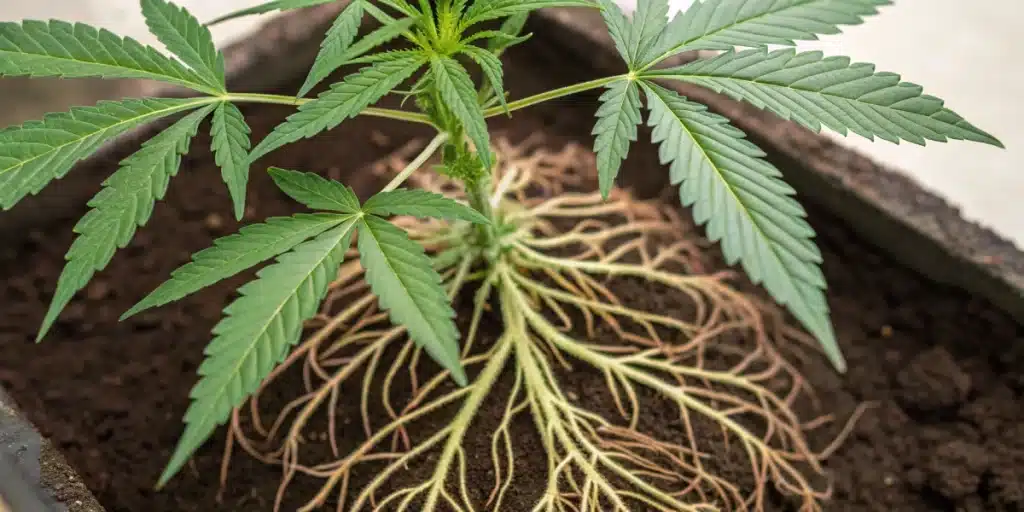
FAQs: Cannabis Plant Anatomy Diagram
What are the most important parts of a cannabis plant?
Roots absorb water and nutrients, stems provide structure and transport, leaves generate energy via photosynthesis, and flowers produce cannabinoids and terpenes. Each component works together to influence plant health, flavor profiles and yield quality.
How can I use an anatomy diagram for growing better cannabis?
Consult a detailed chart to know when to trim leaves for light management, adjust feeding schedules based on root health, or detect nutrient deficiencies early. Matching your plants against a diagram boosts consistency and potency across harvests.
Where can I find detailed cannabis plant anatomy diagrams online?
Visit reputable horticulture websites, university agricultural extensions and dedicated grower communities. Many platforms offer interactive, high‑resolution diagrams that label every major component for both novice and expert cultivators.


